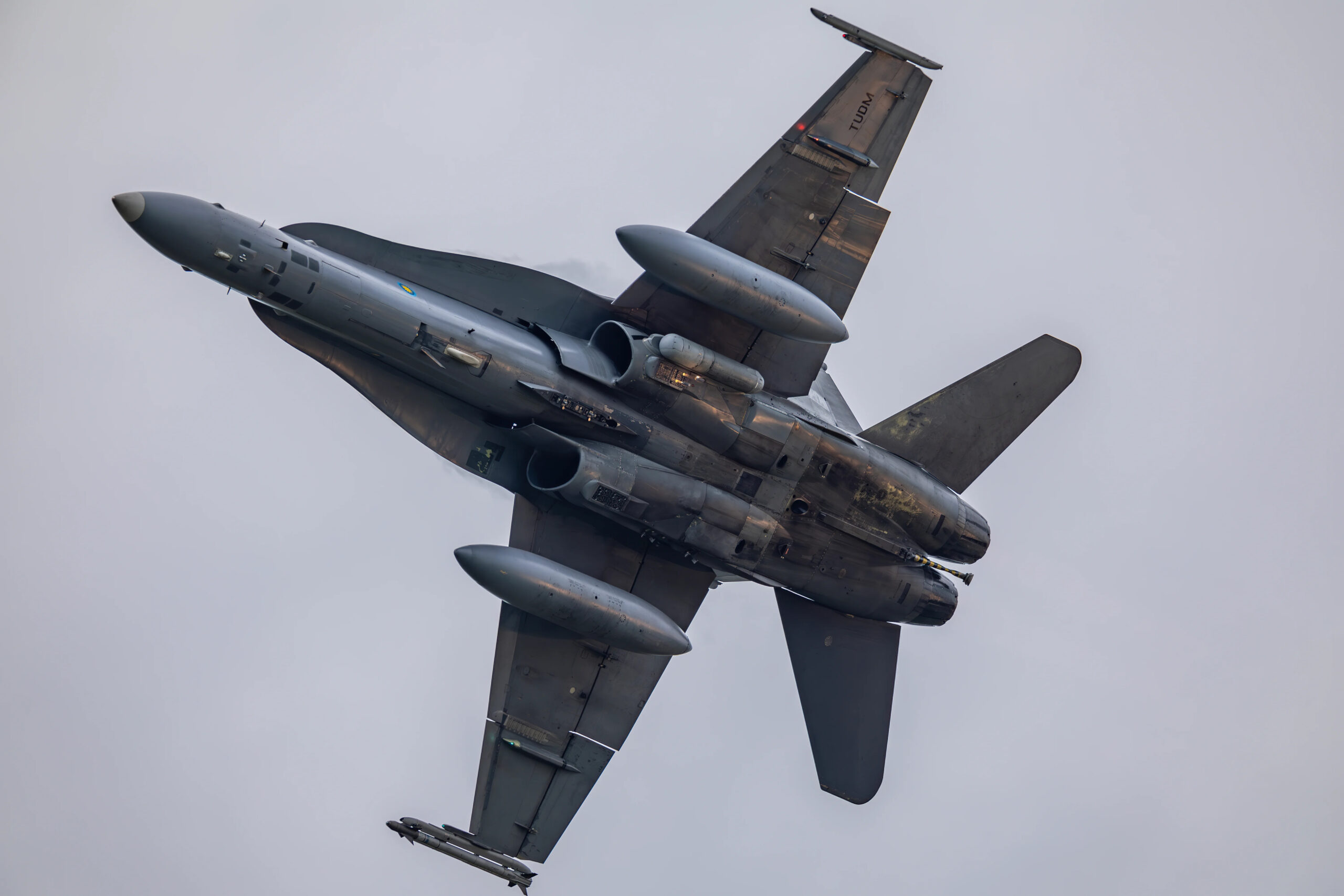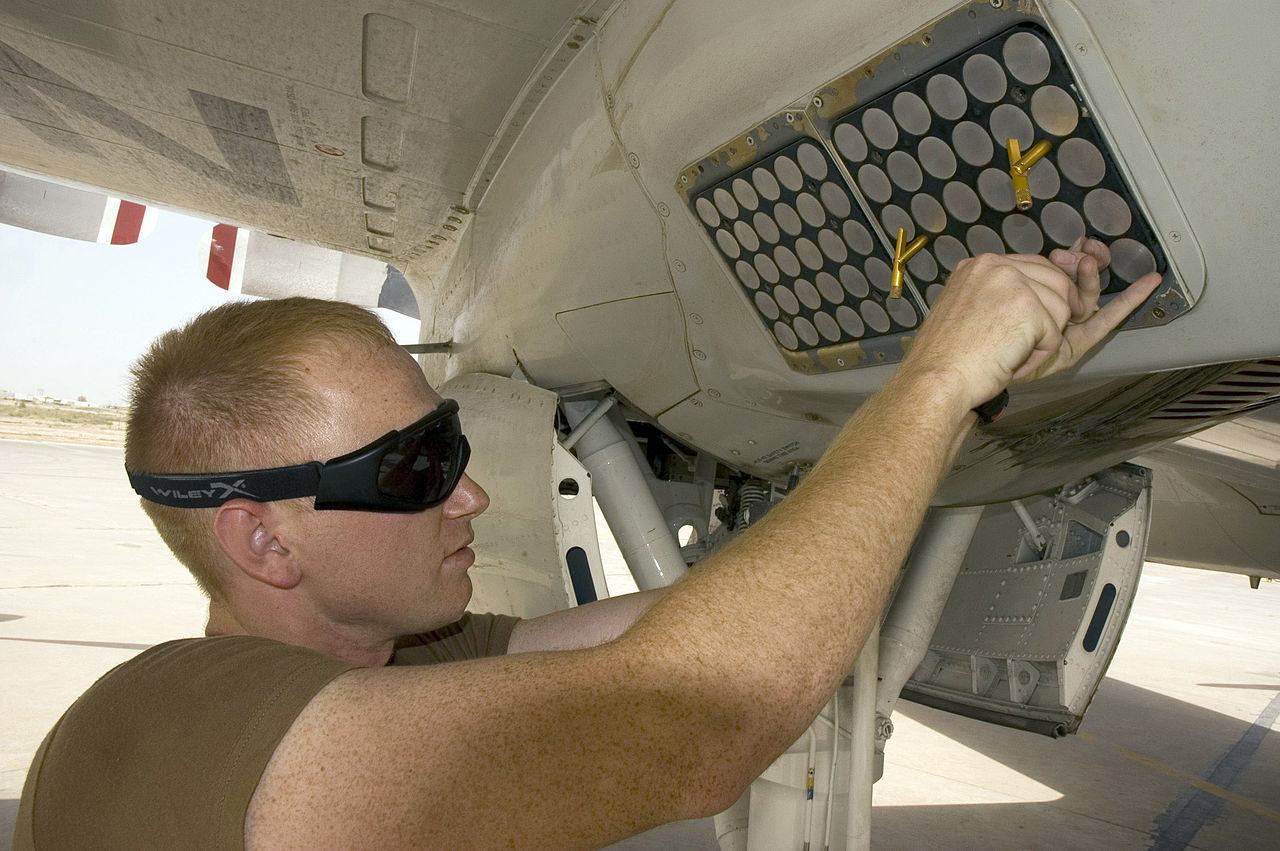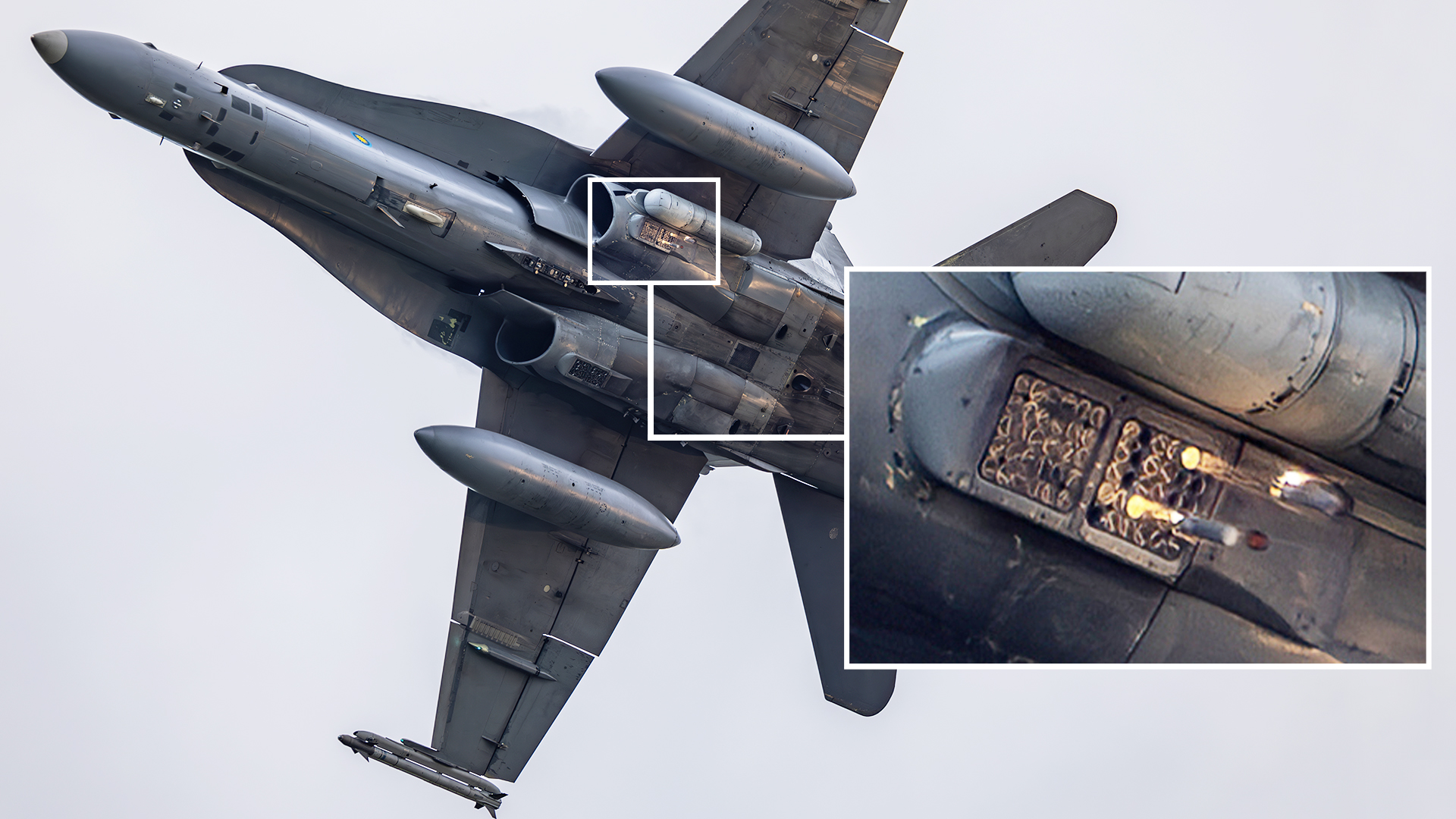Defensive countermeasures, in the form of radar reflecting chaff and infrared decoy flares, are among the best-known tools available to aircrews to help protect them and their aircraft from missile threats. Spectacular imagery of aircraft deploying multiple glowing infrared flares are a well-worn motif in military aviation, too. But it’s much rarer to see, in close detail, the moment in which these countermeasures are actually ejected from the aircraft they are charged with protecting, before they turn into a ball of heat. That’s what makes this photo, from Twitter user @stella991214, showing an F/A-18D Hornet loosing off a pair of countermeasures cartridges, especially noteworthy.
The aircraft in question is a two-seat F/A-18D multirole fighter from the Royal Malaysian Air Force (RMAF), although the exact time and place the photo was taken have not been disclosed. Most importantly, however, two cylindrical cartridges are seen moments after being launched from a dispenser below the fuselage, accompanied by the flash from their pyrotechnic charges. Flares often are made of a magnesium compound that makes them burn extremely hot.


This F/A-18D is equipped with the ‘twin bucket’ countermeasures dispensers that are part of the AN/ALE-47 system. Fitted on a wide variety of platforms, the AN/ALE-47 is described as a ‘smart’ countermeasures dispenser system (CMDS) offering a higher level of automation than earlier systems.
The AN/ALE-47 allows the aircrew to select any of three release modes, as follows:
Fully automatic: The dispenser system receives threat data from the radar warning receiver on the aircraft and then selects the appropriate response to the threat, including the type of countermeasures, the dispersal sequence and pattern, and when to dispense the selected decoys.
Semi-automatic: The dispenser system analyzes the threat data input, selects the best response, and then provides a signal to the aircrew that the system is ready. The aircrew then initiates the release.
Manual operation: The aircrew selects one of the six pre-programmed responses, in terms of quantities, sequences, and types of expendables to be employed in order to produce the required decoy pattern to defeat the threat.
If aircraft have missile approach warning systems that use optical/infrared sensors to pick up the missile launch and approach, this info can be fed into the AN/ALE-47, as well. The Hornet does not have this capability.

Dispensers like these carry different types of decoys simultaneously, with certain common fits allowing you to out chaff and flares in the same buckets. Typically, the cartridges themselves are identified using a ‘118’ or ‘218’ designator — referring to the dimensions in inches. For example, 118 radio-frequency countermeasures (RFCM, chaff) or infrared countermeasures (IRCM, flares) should both fit in the same 118-type bucket.
In the AN/ALE-47 dispenser can now also be loaded with expendable jammers, which have their own active radio-frequency emitter.
The War Zone asked Paul Tremelling, a former U.K. Royal Navy Sea Harrier and Harrier GR9 pilot, as well as a one-time U.S. Navy exchange pilot on the F/A-18E Super Hornet, for his opinion on what IRCM cartridges, designed to spoof hostile heat-seeking missiles by providing a more enticing target, or at least a target that’s representative of the heat source on the targeted aircraft, are being launched here.
A Finnish Air Force F/A-18C Hornet launches IRCM during a an airshow demonstration:

“IRCM comes in various forms depending on your budget and the threat,” Tremelling explained. “For example, a very simple threat can be beaten by a heat source. An advanced threat will need to be beaten by a countermeasure that matches the host aircraft’s thermal signature. It might also need to perform aerodynamically too in order not to simply fall away — as that would not be sufficient to seduce the threat.”
There are also two main ways in which countermeasures — whether IRCM or radar-defeating chaff cartridges — can be used: Preemptively and reactively. In the preemptive mode, the objective is to keep the threat weapons on the missile rail or in the launch tube. Reactively, the aim is to try and ‘seduce’ a hostile weapon while it’s in flight.
As with most elements of air combat, countermeasures are part of a fast-developing game of cat and mouse between attacker and defender. Developments in IRCM, for example, are bound to be followed by corresponding changes to infrared-guided missiles (and especially their seeker heads) to make them less susceptible to these decoys.
“You may technically be reacting to the electromagnetic spectrum, but preempting a shot,” Tremelling observes. “It all boils down to some very clever people giving high-quality advice. This allows you to best match your radio frequency [chaff] and IRCM to the threat. So, theoretically, you’ll go across the beach with chaff and flares, programmed to deploy at the correct interval in the correct amount to keep you alive.”
As to how regularly fighter pilots fly with defensive countermeasures loaded in their jets, Tremelling confirmed that in all three types that he flew operationally “we had flare buckets… and we flew with countermeasures whenever we could.”
“There were areas where chaff use was prohibited, for example, due to local air traffic radars — or where flare use wasn’t allowed for example low-level over dry grass.”
So there we have it: a fighter pilot’s perspective of how defensive countermeasures are used, together with one of the most remarkable photos we have seen showing exactly how these decoys are deployed. And while those little cartridges might not look like much, they can be enough to ensure the aircraft, and its crew, live to fight another day.
Contact the author: thomas@thedrive.com
